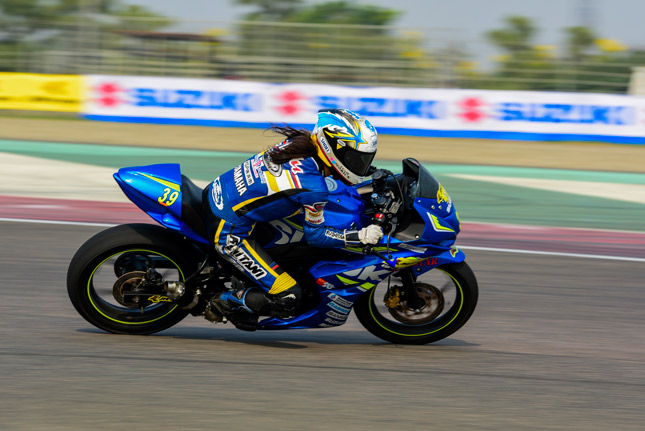 Do you want more power out of your bike? That is the most rhetorical question of all time, who doesn’t want more of it. Every one of us wants a little higher top end to cruise like a king on the highway. All the FZ-S owners want a little more top speed at the end of the red rainbow, all the Apache owners want an increased red line on their console so they can push their beast a little more in the high revs. It seems like the only one satisfied with everything in their bike are the ROYAL ENFIELD owners ;) But this is not about what type of owner you are, this is about advancing your engine’s ignition timing so you can push your engine at higher speeds with proper fuel combustion.
Do you want more power out of your bike? That is the most rhetorical question of all time, who doesn’t want more of it. Every one of us wants a little higher top end to cruise like a king on the highway. All the FZ-S owners want a little more top speed at the end of the red rainbow, all the Apache owners want an increased red line on their console so they can push their beast a little more in the high revs. It seems like the only one satisfied with everything in their bike are the ROYAL ENFIELD owners ;) But this is not about what type of owner you are, this is about advancing your engine’s ignition timing so you can push your engine at higher speeds with proper fuel combustion.What is Engine ignition timing?
Ignition timing refers to the point of time when the spark occurs inside the cylinder. The spark is delivered by the spark plug, in some motorcycles, there are two spark-plugs like Pulsar DTS-I and Royal Enfield and some even have three like sports series of Pulsar the RS and the NS 200.
As I mentioned in the article about Engine timing retardation, the combustion doesn’t happen instantaneously, it requires time. The power stroke can be .025 second at 2400 RPM to .0055 second at 10,700 RPM. Now my point is the higher we climb the RPM metre, less will be the time available for proper combustion of fuel during the power stroke. The combustion process is more of a controlled burning instead of an explosion and that is the reason for its dependency on time. The power stroke starts with the ignition of the air-fuel mixture which pushes down the piston and generates power. Thus the air Fuel-mixture doesn’t burn efficiently at very high RPM’s, which calls for advancing the ignition spark.
What does advancing the ignition timing means?
Advancing the ignition spark refers to the making the ignition spark occurs Before the Top Dead Center (BTDC). Advancing the timing is measured in degrees means how many degrees before the piston reaches the Top Dead Centre (TDC). This means that the spark will occur before the piston reaches the top of the cylinder, providing enough time for the air-fuel mixture to burn and the gases to expand thus ensuring proper combustion.
All the new Engines are computer controlled ignition systems. Usually an ECU or Electronic Control Unit has a timing map with all the proper spark advance set-up for all the engine speeds. These ECU’s control all the aspects related to ignition in the system and can automatically advance the engine’s ignition timing with respect to change in the RPM. Almont all the ECU which is fitted as stock in your bike is from OEM’s or Original Equipment Manufacturers which means that they can’t be remapped with your personal settings.
RELATED ARTICLE: Motorcycle ECU Remapping- All you need to know
It is for the best if you are riding your bike with the intention of just everyday commuting and touring, but if you are one of those guys who like to modify their bike with aftermarket exhaust and other performance mods then you should consider changing the ignition timing.
There are mainly two ways to advance the Engine timing:
• Dynamometer test coupled with ECU remap- In this process the dynamo meter first tests your bike and then accordingly set your engine’s timing to advance.
• Aftermarket ECU- This one is probably more simple as you can just head into the market to buy an aftermarket ECU to accompany the engine mod you have just installed on your bike.
Out of the two methods mentioned above, the first one is the best method, because the precision level of such processes is more and certain type of load dynamometer can also replicate the results with a load on the engine giving you a more real-world result.• Aftermarket ECU- This one is probably more simple as you can just head into the market to buy an aftermarket ECU to accompany the engine mod you have just installed on your bike.
Final thoughts:
Advancing your engine’s timing can result in more power but it can also make your engine run a little warm but that is also dependent on the ambient temperature. If it is a really hot day then the chances are that your engine might run relatively hotter. Advancing can also increase your Idle Speed, but it can also be adjusted back down easily. Throttle response and Revving ability can be significantly increased.
As I mentioned advancing the timing is measured in degrees. It is best to advance the timing for 2-5 degrees as over advancing the timing can make you lose your top end as the spark will start occurring much earlier. Advancing the engine timing shifts your power band from lower to the upper end, and the lower end is the point where you do most of your daily riding so you need to be aware of the trade-off.
For everything related to 4-stroke Engine’s stay tuned to BikesMedia.
By: Yetnesh Dubey











